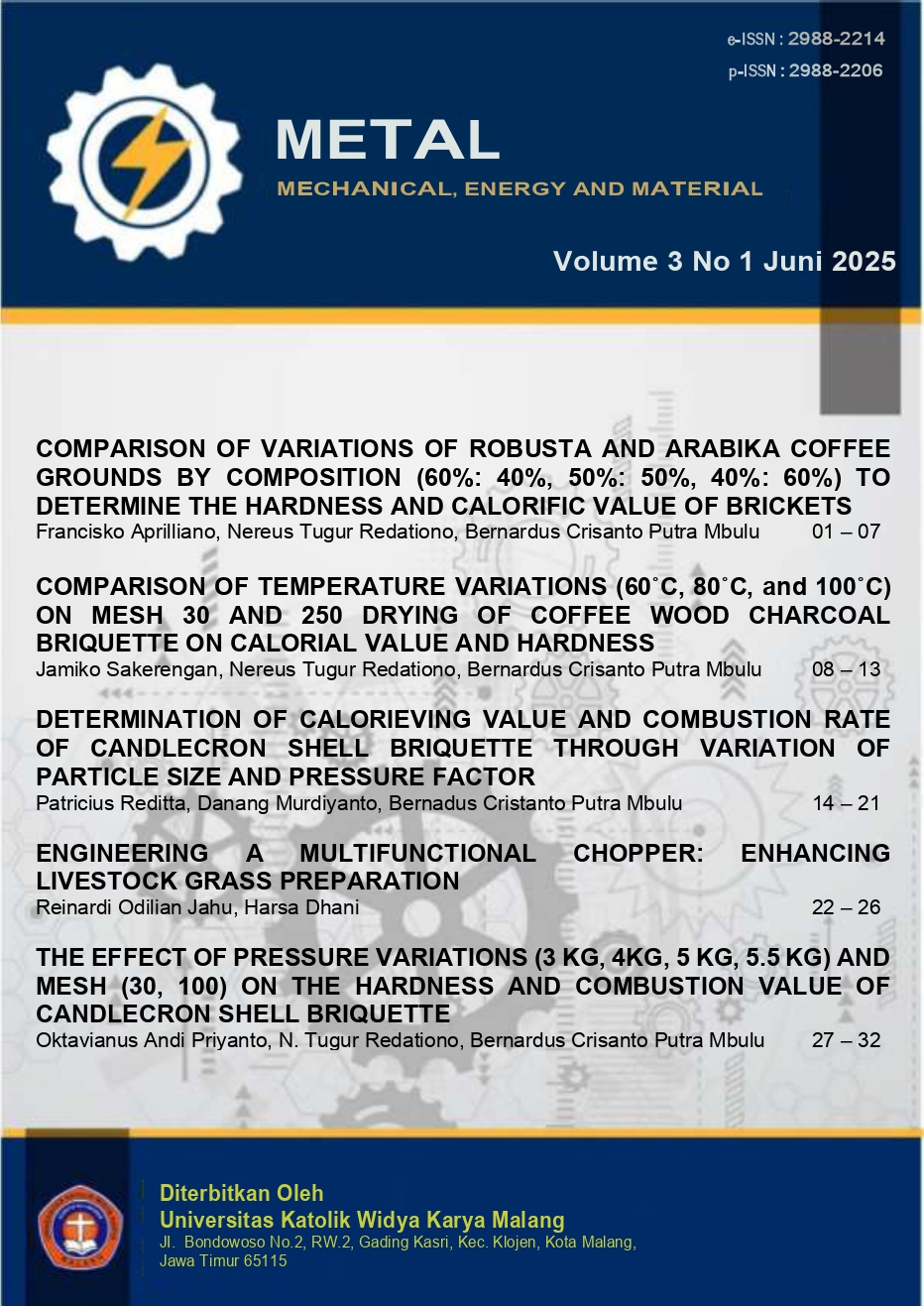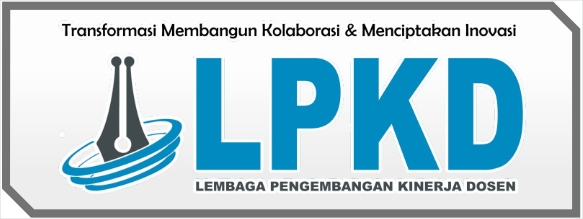DETERMINATION OF CALORIEVING VALUE AND COMBUSTION RATE OF CANDLECRON SHELL BRIQUETTE THROUGH VARIATION OF PARTICLE SIZE AND PRESSURE FACTOR
Keywords:
briquettes, pecan shell, pressure, calorific value, combustion rateAbstract
Candlenut shell is an organic waste that has a hard texture and has a high carbon element. The amount of candlenut shell produced from each processing of candlenut seeds is very large but has not been optimally utilized. For this reason, an effort is needed to utilize candlenut shells so that they do not become waste. In the manufacture of hazelnut shell briquettes, hazelnut shells are carbonized at 500 °, sifted with mesh 30 and 100 sieves, given a compressive load of 3 kg, 4 kg, 5 kg and 5.5 kg, the adhesive on hazelnut shell briquettes is starch and drying is carried out with a drying oven for 3 hours at a temperature of 80 °. The purpose of this study was to determine the effect of variations in pressure and particle size on the quality of hazelnut shell briquettes when viewed from the combustion rate and calorific value. The methodology used in this research is experimentation on hazelnut shell briquettes, testing hazelnut shell briquettes including testing water content, testing ash content, burning rate and calorific value of briquettes. From the results of the research on hazelnut shell briquettes with variations in pressure and mesh, the highest calorific value in hazelnut shell raw material briquettes is in the 5.5 Kg pressure specimen on mesh 30, namely 9855.18 Cal/gram and the bomb calorimeter test results are 7008.03 Cal/gram with an error rate of 24.40%, the higher the pressure will produce a higher calorific value as well. The highest combustion rate value is in hazelnut shell briquettes at a pressure specimen of 3 Kg mesh 100 with a value of 1.2 grams/minute the smaller the particle size, the higher or faster the combustion rate.
References
R. Sudradjat, D. Tresnawati, and D. Setiawan, “Pembuatan Arang Aktif dari Tempurung Biji Jarak Pagar,” J. Penelit. Has. Hutan, vol. 23, no. 2, pp. 143–162, 2005, doi: 10.20886/jphh.2005.23.2.143-162.
V. I. V. Lina Lestari, La Ode Murgazali Bakasa, “Pengaruh Temperatur Aktivasi dan Tekanan Kompaksi terhadap Kualitas Briket Arang Ampas Tebu (Saccharum officinarum),” J. Apl. Fis., vol. 15, no. 1, pp. 31–36, 2019.
M. R. Aziz, A. L. Siregar, A. B. Rantawi, and I. B. Rahardja, “Pengaruh Jenis Perekat pada Briket Cangkang Kelapa Sawit Terhadap Waktu Bakar,” Pros. SEMNASTEK Fak. Tek. Univ. Muhammadiyah Jakarta, pp. 141–152, 2019, [Online]. Available: https://jurnal.umj.ac.id/index.php/semnastek/article/view/5256
A. Setiawan, O. Andrio, and P. Coniwanti, “PENGARUH KOMPOSISI PEMBUATAN BIOBRIKET DARI CAMPURAN KULIT KACANG DAN SERBUK GERGAJI TERHADAP NILAI PEMBAKARAN,” J. Tek. Kim., vol. 18, no. 2, pp. 9–16, 2012.
R. Darun Naim, Danang Dwi Saputro, “PENGARUH VARIASI TEMPERATUR CETAKAN TERHADAP KARAKTERISTIK BRIKET KAYU SENGON PADA TEKANAN KOMPAKSI 5000 PSIG,” J. Mech. Eng. Learn. Kelom-, vol. 2, no. 1, 2013.
M. A. Almu, S. Syahrul, and Y. A. Padang, “ANALISA NILAI KALOR DAN LAJU PEMBAKARAN PADA BRIKET CAMPURAN BIJI NYAMPLUNG (Calophyllm Inophyllum) DAN ABU SEKAM PADI,” Din. Tek. Mesin, vol. 4, no. 2, pp. 117–122, 2014, doi: 10.29303/d.v4i2.61.
P. R. SASMITA, Modul Fisik Suhu, Kalor, Dan Perpindahan Kalor. 2015. [Online]. Available: http://danaseknginden1.blogspot.com/
Downloads
Published
How to Cite
Issue
Section
License
Copyright (c) 2025 Mechanical, Energy and Material (METAL)

This work is licensed under a Creative Commons Attribution-NonCommercial-ShareAlike 4.0 International License.















